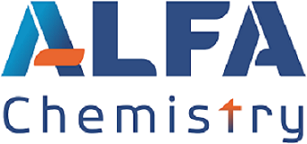| Alfa Chemistry | |
|---|---|
| Country: | United States |
| Tel: | 5166625404 |
| E-mail: | support@alfa-chemistry.com |
| QQ: | |
| Skype: | Chat Now! |
What Techniques Are Used For Elemental Analysis?
Release time: 2025-03-27
Elemental analysis provides important information about the composition and properties of materials, helping researchers and engineers optimize material performance, ensure product quality, and meet industry standards. For example, in fields such as metal materials, semiconductor materials, and nanomaterials, elemental analysis can be used for high-purity analysis, providing data support for the development of mineral resources. Additionally, elemental analysis plays an important role in various fields, including environmental monitoring, food safety, the pharmaceutical industry, and archaeological research.
Elemental Analysis
- Provides precise analysis from major to trace elements, covering metals, non-metals, and metalloids.
- Utilizes advanced instruments (such as ICP-MS, ICP-OES, AAS, etc.) to ensure high sensitivity and accuracy of test results.
Material Purity Analysis
- Suitable for impurity detection in materials such as metals, alloys, ceramics, and polymers.
- Helps clients control the quality of raw materials, ensuring products comply with industry standards and regulatory requirements (such as ASTM, ISO).
Element Distribution Analysis
- Employs X-ray fluorescence spectroscopy (XRF) imaging technology for visual analysis of element distribution in samples.
- Used to study the microstructure of materials, component uniformity, and element migration, widely applied in electronics, geology, archaeology, and other fields.
What Techniques Are Used For Elemental Analysis?
X-ray Fluorescence Spectroscopy (XRF)
X-ray fluorescence spectroscopy (XRF) is an analytical technique based on the interaction of X-rays with matter. By measuring the energy and intensity of these characteristic X-rays, the types and concentrations of elements in the sample can be determined.
ICP-OES
ICP-OES is based on inductively coupled plasma (ICP) technology. The sample is vaporized and aerosolized at high temperatures, generating plasma through the ICP.
ICP-MS
ICP-MS combines the advantages of ICP technology and mass spectrometry, allowing for the detection of ultra-trace elements, with detection limits reaching ppt and even ppb levels.
Atomic Absorption Spectroscopy
AAS is primarily used for the quantitative analysis of metal elements, offering high sensitivity and good selectivity. It is suitable for both liquid and solid samples, particularly for the analysis of metals and alloys.

